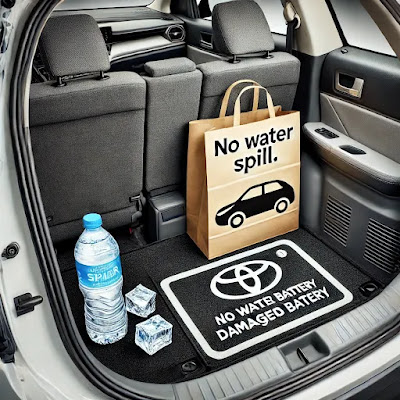7 Things You Should Never Do to Your Toyota Hybrid
Avoid These Common Mistakes with Your Toyota Hybrid.
If you own a Toyota hybrid, it’s crucial to understand that certain habits can damage its unique systems and components. From years of following automotive insights and hybrid technology, I've learned that many common issues with Toyota hybrids can be easily prevented with a little know-how. Here are the top things you should avoid doing to keep your hybrid running smoothly for years.
1. Avoid Spilling Water on the Back Seat
The hybrid battery in many Toyota hybrids is located beneath the back seat. Spilling water here can seep into the battery compartment, potentially causing corrosion and expensive damage. If a spill happens, contact a hybrid specialist immediately to prevent long-term issues.
Pro Tip: Know Your Battery Location
Knowing the location of your hybrid battery is useful for avoiding water spills. If you’re unsure, drop a comment with your Toyota hybrid model and year, and I’ll let you know where it is.
2. Don’t Leave the Fuel Door Open for Over 30 Minutes
When you open the fuel door on your hybrid, you have only 30 minutes to refuel before the system closes a vapor-sealing valve. If you delay, the next time you try to fill up, gas could overflow, creating a mess.
Most hybrids have a button for opening the fuel door instead of a manual release. That slight delay is because the system needs time to open the vapor-sealing valve, designed to prevent gasoline vapors from escaping into the environment. So, always refuel within 30 minutes of opening the door to avoid any issues.
3. Don’t Drive in “B Mode” All the Time
The “B Mode” (or “brake mode”) on your hybrid is there to assist when descending long hills by slowing the car through engine braking. However, many people mistakenly drive in B Mode all the time, which stresses the engine and the hybrid system.
Unlike conventional cars, hybrids don’t have physical gears to manage downshifting, so B Mode artificially raises engine revs for braking assistance. This is fine when needed, but overuse puts unnecessary stress on the engine. Stick to B Mode only when necessary for better long-term health of your vehicle.
.
4. Avoid Overfilling the Engine Oil
While overfilling any engine can be harmful, hybrid engines are especially sensitive. Excess oil can be drawn into the intake manifold, which can lead to misfires and cold-start issues.
It’s better to slightly underfill the oil than overfill it. When adding oil, check the level after the engine is warm, as cold oil measurements can give inaccurate results. Toyota’s official advice is to warm up the engine, wait five minutes, then check the oil level to ensure it’s accurate.
5. Don’t Jump-Start Other Cars from Your Hybrid
Unlike regular vehicles, hybrids lack a traditional alternator. Instead, they have a DC-to-DC converter that powers the 12-volt system. Jump-starting another car from your hybrid can strain this converter, potentially leading to costly damage.
If another Toyota hybrid needs a jump, that’s generally safe. But for conventional cars, stick to a jumper pack or another vehicle.
Bonus Tip: Jump-Starting Your Own Hybrid
If you need to jump-start your own hybrid, Toyota has provided a dedicated jump-start terminal under the hood for easy access. But make sure to never reverse the cables — this can cause serious damage to your hybrid system.
6. Don’t Ignore Battery Cooling Fan Maintenance
The battery cooling fan is a vital component for managing battery temperature, especially in hotter climates. Over time, the fan can get clogged with dust, pet hair, or other debris, causing it to work harder or even overheat. Clean or replace this fan periodically to keep the battery system efficient and safe.
How to Check the Battery Cooling Fan
The fan is often located near the back seat or trunk area, depending on the model. Consult your owner’s manual for exact instructions on cleaning or checking it, or reach out to a hybrid specialist if you’re unsure.
7. Avoid Idling for Long Periods
While Toyota hybrids can handle idling well, prolonged idling in hot weather can put extra stress on the hybrid battery and cooling system. If you’re stopped for an extended time, like waiting for someone, it’s better to turn the car off. This habit will help extend your battery life and prevent unnecessary wear on the cooling system.
Conclusion
Owning a Toyota hybrid comes with unique benefits and some special maintenance considerations. Avoiding these common mistakes can help your hybrid stay reliable, efficient, and trouble-free.
If you enjoyed this post, check out other articles on The Motor Wire, where we cover everything from hybrid maintenance tips to the latest in automotive technology. Be sure to subscribe for regular updates, and explore our series All About Cars for in-depth looks into car care and industry news.







Comments
Post a Comment